Enzymes(酶)
Enzymes are very efficient and specific catalyst proteins which react with 1 or few types of substrates in biochemical reactions and are responsible for bringing about almost all of the chemical reactions in living organisms. Enzymes speed up reactions by providing an alternative reaction pathway of lower activation energy. Without enzymes, reactions take place at a rate far too slow for the pace of metabolism which means that they speed up the chemical reactions in living things.
There are 2 types of enzymes, ones that help join specific molecules together to form new molecules & others that help break specific molecules apart into separate molecules. Enzymes play many important roles ouside the cell as well. One of the best examples of this is the digestive system. For instance, it is enzymes in your digestive system that break food down in your digestive system break food down into small molecules that can be absorbed by the body. Some enzymes in your digestive system break down starch, some proteins and others break down fats. The enzymes used to digest our food are extra-cellular since they are located outside our cells & enzymes inside our cells are intra-cellular enzymes. Enzymes are used in ALL chemical reactions in living things; this includes respiration, photosynthesis, movement growth, getting rid of toxic chemicals in the liver and so on. Enzymes are proteins that must have the correct structure to be active. They are very easily affected by heat, pH and heavy metal ions.
Ribonucleoprotein enzyme catalytic activity is located in the protein part but for some the catalytic activity is in the RNA part. A catalyst is any substance which makes a chemical reaction go faster, without itself being changed. A catalyst can be used over and over again in a chemical reaction and does not get used up.
Enzymes lower the amount of activation energy needed by binding to the reactants of the reaction they catalyze, thus speed up the reaction and can process millions of molecules per second. Enzymes are typically large proteins with high molecular weight that permit reactions to go at conditions that the body can tolerate.
Enzyme nomenclature is based on what the enzyme reacts with & how it reacts along with the ending ase.
Enzymes must get over the activation energy hurdle.
Enzymes change how a reaction will proceed which reduces the activation energy and makes it faster. The more we increase the enzyme concentration the faster the reaction rate for non-catalyzed reactions. Enzymes that are catalyzed reactions also increase reaction rate at higher level of concentration but up to a certain point called Vmax which means that the enzyme has reached its maximum point. The reaction is limited by both the concentrations of the enzyme and substrate. Enzymes as catalysts take part in reactions which provide an alternative reaction pathway. Enzymes do not undergo permanent changes and remain unchanged at the end of the reaction. They only change the rate of reaction, not the position of the equilibrium.Enzymes as catalysts are highly selective by only catalysing specific reactions due to the shapes of the enzyme’s molecule.
Enzymes contain a globular protein part called apoenzyme and a non-protein part named cofactor or prosthetic group or metal-ion-activator. Changes in temperature and pH have great influence on the intra- and intermolecular bonds that hold the protein part in their secondary and tertiary structures.
Examples of cofactors are 1. Prosthetic group that are permanently bound to the enzyme. 2. Activator group which are cations (positively charged metal ions) & temporarily bind to the active site of the enzyme. 3.Coenzymes, usually vitamins or made from vitamins which are not permanently bound to the enzyme molecule, but combine with the enzyme-substrate complex temporarily. Enzymes require the presence cofactors before their catalytic activity can be exerted. This entire active complex is referred to as the holoenzyme.
Without enzymes, our guts would take weeks to digest our food, our muscles, nerves and bones would not work properly and so on…
Main Enzyme category groups:
Oxidoreductases:
All enzymes that catalyse oxido-reductions belong in this class. The substrate oxidized is regarded as a hydrogen or electron donor. The classification is based on 'donor:acceptor oxidoreductase'. The common name is 'dehydrogenase', wherever this is possible; as an alternative, 'acceptor reductase' can be used. 'Oxidase' is used only where O2 is an acceptor. Classification is difficult in some cases, because of the lack of specificity towards the acceptor.
Transferases:
Transferases are enzymes that transfer a group, for example, the methyl group or a glycosyl group, from one compound (generally regarded as donor) to another compound (generally regarded as acceptor). The classification is based on the scheme 'donor:acceptor grouptransferase'. The common names are normally formed as 'acceptor grouptransferase' or 'donor grouptransferase'. In many cases, the donor is a cofactor (coenzyme) that carries the group to be transferred. The aminotransferases constitute a special case.
Hydrolases:
These enzymes catalyse the hydrolysis of various bonds. Some of these enzymes pose problems because they have a very wide specificity, and it is not easy to decide if two preparations described by different authors are the same, or if they should be listed under different entries. While the systematic name always includes 'hydrolase', the common name is, in most cases, formed by the name of the substrate with the suffix -ase. It is understood that the name of the substrate with this suffix, and no other indicator, means a hydrolytic enzyme. It should be noted that peptidases have recommended names rather than common names.
Lyases:
Lyases are enzymes that cleave C-C, C-O, C-N and other bonds by means other than by hydrolysis or oxidation. They differ from other enzymes in that two (or more) substrates are involved in one reaction direction, but there is one compound fewer in the other direction. When acting on the single substrate, a molecule is eliminated and this generates either a new double bond or a new ring. The systematic name is formed according to 'substrate group-lyase'. In common names, expressions like decarboxylase, aldolase, etc. are used. 'Dehydratase' is used for those enzymes that eliminate water. In cases where the reverse reaction is the more important, or the only one to be demonstrated, 'synthase' may be used in the name.
Ligases:
Ligases are enzymes that catalyse the joining of two molecules with concomitant hydrolysis of the diphosphate bond in ATP or a similar triphosphate. 'Ligase' is often used for the common name, but, in a few cases, 'synthase' or 'carboxylase' is used. 'Synthetase' may be used in place of 'synthase' for enzymes in this class.
Products for Enzymes
- 41701(11)
- Activating Transcription Factor(3)
- Adenylate Kinase(10)
- AHCY(3)
- Aldolase(9)
- Asparaginase(5)
- Aurora Kinase(18)
- Beta Lactamase(3)
- Calcium and Integrin Binding(2)
- Calcium/Calmodulin-Dependent Protein Kinase(4)
- Carbonic Anhydrase(49)
- Casein Kinase(36)
- Cathepsin(52)
- Chitinase(5)
- Creatin Kinases(9)
- Cyclin(7)
- Cyclin-Dependent Kinase(18)
- Cyclophilin(23)
- Deaminase(14)
- Decarboxylase(12)
- Dehydrogenase(96)
- Discoidin Domain Receptor Tyrosine Kinase(2)
- DNA Polymerase(4)
- EGF Receptor(3)
- Endonuclease(6)
- Enolase(10)
- Enterokinase(5)
- Epimerase(3)
- Esterase(15)
- FGF Receptors(12)
- FK506 Binding Protein(10)
- Fructosamine 3 Kinase(2)
- Galactosidase(5)
- Glucosidase(32)
- Gluteradoxin(7)
- Glycogen synthase kinase(2)
- Glycosylase(10)
- Glyoxalase(3)
- Granzyme(7)
- Guanylate Kinase(2)
- Heparanase(2)
- Histone Deacetylase(3)
- Hydratase(10)
- Hydrolase(33)
- Hydroxylase(6)
- Isomerase(26)
- Jun N-terminal Kinase(1)
- Jun Proto-Oncogene(2)
- Kallikrein(26)
- Ligase(4)
- Lipase(14)
- Lipocalin(6)
- Lyase(9)
- LYVE1(3)
- Mitogen-Activated Protein Kinase(16)
- MMP(68)
- Mutase(11)
- Natural Enzymes(4)
- Nuclease(18)
- Nucleotidase(4)
- Nudix Type Motif(11)
- Other Enzymes(63)
- Oxidase(23)
- Oxygenase(12)
- Paraoxonase(3)
- Peptidase(41)
- Peroxiredoxin(10)
- Phosphatase(150)
- Phosphorylase(9)
- PI3-kinase(5)
- Polymerase(13)
- PPARG(2)
- Protease(15)
- Proteasome(54)
- Protein Kinase Akt1/PKB alpha(4)
- Protein Kinase-A(7)
- Protein Kinase-C(3)
- Protein Kinases(86)
- Protein Tyrosine Phosphatase(10)
- Reductase(60)
- Secreted Phospholipase A2(10)
- Serine Threonine Kinase(4)
- Sulfatase(8)
- Synthase(23)
- Synthetase(33)
- TGFBR(3)
- TGM2(3)
- TIMP(10)
- TPA(4)
- Transferase(156)
- Tyrosine Kinase(9)
- Ubiquitin Conjugating Enzyme(39)
- Uromodulin(4)
- VEGF Receptors(14)
- Transaminase(19)
- Hexokinase(6)
- TIE1(6)
- Cat.No. 产品名称 Information
-
GP22597
PKLR Human
丙酮酸激酶、肝脏和红细胞重组人

-
GP22598
PKM2 Human
Tumor Type M2 Pyruvate Kinase Human Recombinant

-
GP22599
PKM2 Mouse
Tumour Type M2 Pyruvate Kinase Mouse Recombinant

-
GC50508
PKUMDL WQ 2101
Negative allosteric modulator of 3-phosphoglycerate dehydrogenase (PHGDH)

-
GC50509
PKUMDL WQ 2201
Negative allosteric modulator of 3-Phosphoglycerate dehydrogenase (PHGDH)
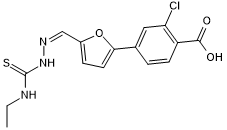
-
GP22093
PLA1A Human
Phospholipase A1 Member A Human Recombinant

-
GP22094
PLA2G10 Human
Secreted Phospholipase A2-X Human Recombinant

-
GP22095
PLA2G12 Human
Secreted Phospholipase A2-XII Human Recombinant

-
GP22096
PLA2G1B Human
Secreted Phospholipase A2-IB Human Recombinant

-
GP22097
PLA2G2A Human
Secreted Phospholipase A2-IIA Human Recombinant

-
GP22098
PLA2G2D Human
Secreted Phospholipase A2-IID Human Recombinant

-
GP22099
PLA2G2E Human
Secreted Phospholipase A2-IIE Human Recombinant

-
GP22100
PLA2G5 Human
分泌型磷脂酶 A2-V 人类重组体

-
GP22101
PLA2G7 Human
Secreted Phospholipase A2-VII Human Recombinant

-
GP22102
PLA2G7 Human, HEK
Secreted Phospholipase A2-VII Human Recombinant, HEK

-
GP22103
PLAP Human
Placental Alkaline Phosphatase Human Recombinant

-
GC71219
Plasma kallikrein-IN-4
Plasma kallikrein-IN-4(实施例153)是一种血浆激肽释放酶抑制剂,对人血浆激肽放酶的IC50为0.016μM。
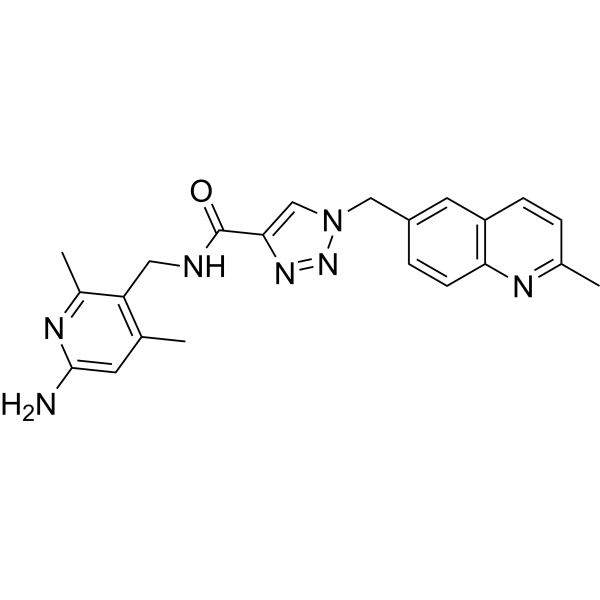
-
GP22104
PMM1 Human
Phosphomannomutase 1 Human Recombinant

-
GP22105
PMM2 Human
Phosphomannomutase 2 Human Recombinant

-
GP22600
PMVK Human
Phosphomevalonate Kinase Human Recombinant

-
GP22106
PNMT Human
Phenylethanolamine-N-Methyltransferase Human Recombinant

-
GP22107
PNP Human
Purine Nucleoside Phosphorylase Human Recombinant

-
GP22108
PNPO Human
Pyridoxamine 5'-Phosphate Oxidase Human Recombinant

-
GP22124
PNPT1 Human
Polyribonucleotide Nucleotidyltransferase 1 Human Recombinant

-
GP22109
POFUT1 Human
Protein O-Fucosyltransferase 1 Human Recombinant

-
GP22110
POGLUT1 Human
Protein O-Glucosyltransferase 1 Human Recombinant

-
GP22111
POLB Human
Polymerase (DNA directed), Beta Human Recombinant

-
GP22112
POLL Human
Polymerase (DNA directed), Lambda Human Recombinant

-
GC18271
Polmacoxib
帕马考昔,CG100649
An inhibitor of COX-2 and carbonic anhydrase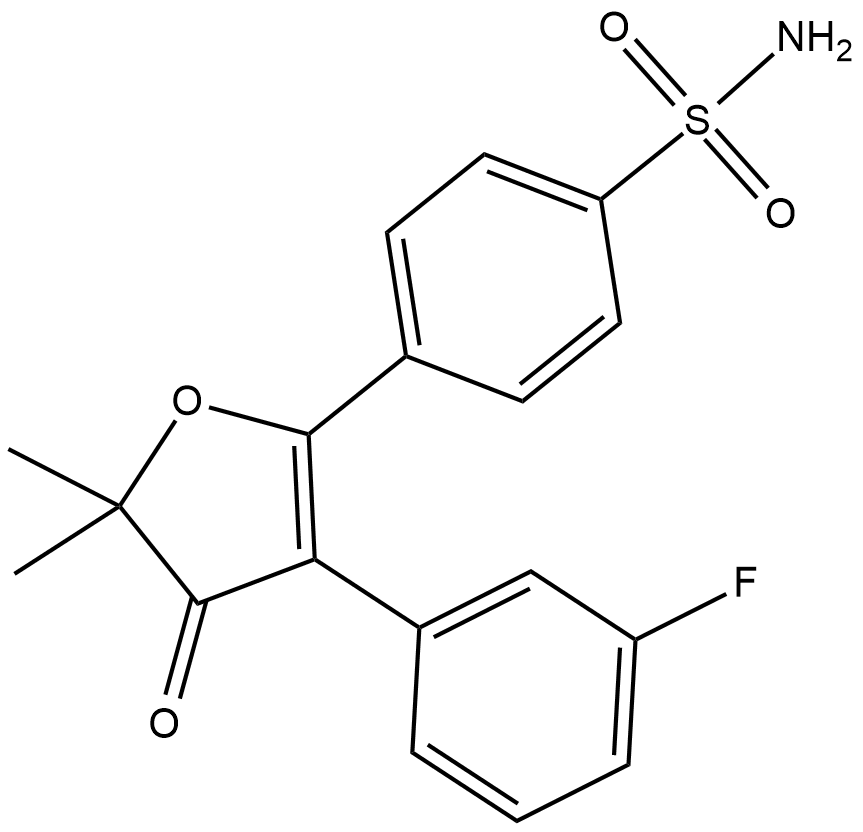
-
GP22113
POLR2D Human
Polymerase II Polypeptide D Human Recombinant

-
GP22114
POLR2E Human
Polymerase II Polypeptide E Human Recombinant

-
GP22115
POLR2F Human
Polymerase II Polypeptide F Human Recombinant

-
GP22117
POLR2I Human
Polymerase II Polypeptide I Human Recombinant

-
GP22118
POLR2J2 Human
Polymerase II Polypeptide J2 Human Recombinant

-
GP22119
POLR2J3 Human
Polymerase II Polypeptide J3 Human Recombinant

-
GP22116
POLR3F Human
Polymerase III Polypeptide F Human Recombinant

-
GP22120
POLR3K Human
Polymerase III Polypeptide K Human Recombinant

-
GC62487
POMHEX
POMHEX 是一个消旋混合物,是具有细胞渗透性的 HEX 的 POM 前体药物,是ENO2 的特异性抑制剂。POMHEX 对ENO1 缺失的细胞表现出低纳摩尔级别活性,并对 ENO1 缺失的肿瘤模型表现出良好的抗癌效果。POMHEX 是有效的糖酵解抑制剂。
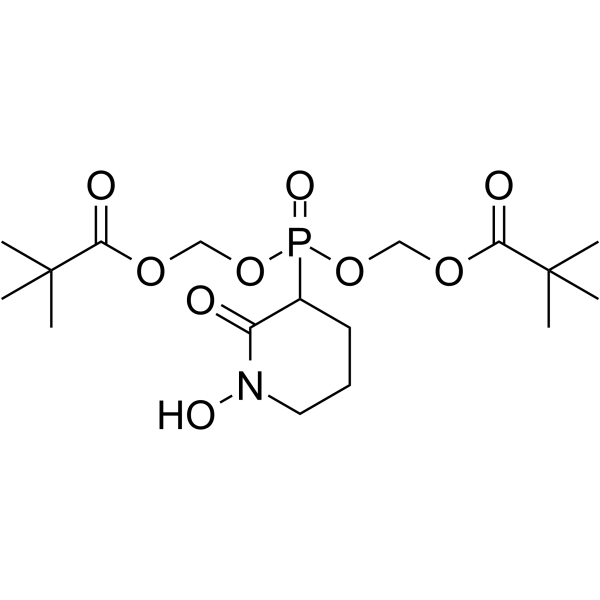
-
GP22121
PON1 Human
Paraoxonase-1 Human Recombinant

-
GP26173
PON1 Human, HEK
PON1 Human Recombinant produced in HEK cells is a single, glycosylated, polypeptide chain (16-355 a

-
GP22122
PON2 Human
对氧磷酶 2 人重组体

-
GC73572
PP5-IN-1
PP5-IN-1(化合物P053)是一种丝氨酸/苏氨酸蛋白磷酸酶-5 (PP5)的竞争性抑制剂,结合其催化结构域并导致肾癌细胞凋亡。
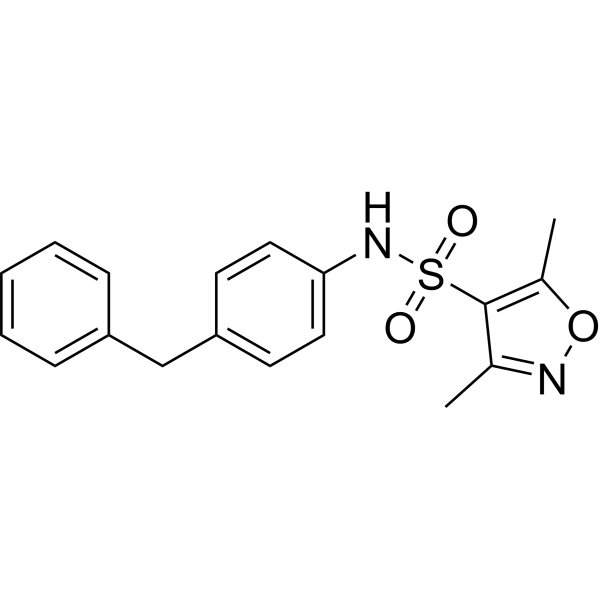
-
GP22125
PPA E.Coli
Inorganic Pyrophosphatase E.Coli Recombinant

-
GP22126
PPA1 Human
Pyrophosphatase-1 Human Recombinant

-
GP22127
PPA2 Human
Pyrophosphatase-2 Human Recombinant

-
GP22601
PPARG Human
Peroxisome Proliferator Activated Receptor Gamma Human Recombinant

-
GP22602
PPARG Human (1-477)
Peroxisome Proliferator Activated Receptor Gamma Human Recombinant, (1-477 a.a)

-
GP22128
PPCDC Human
Phosphopantothenoylcysteine Decarboxylase Human Recombinant

-
GP22129
PPCS Human
Phosphopantothenoylcysteine Synthetase Human Recombinant

-
GP22130
PPID Mouse
Peptidylprolyl Isomerase D Mouse Recombinant





